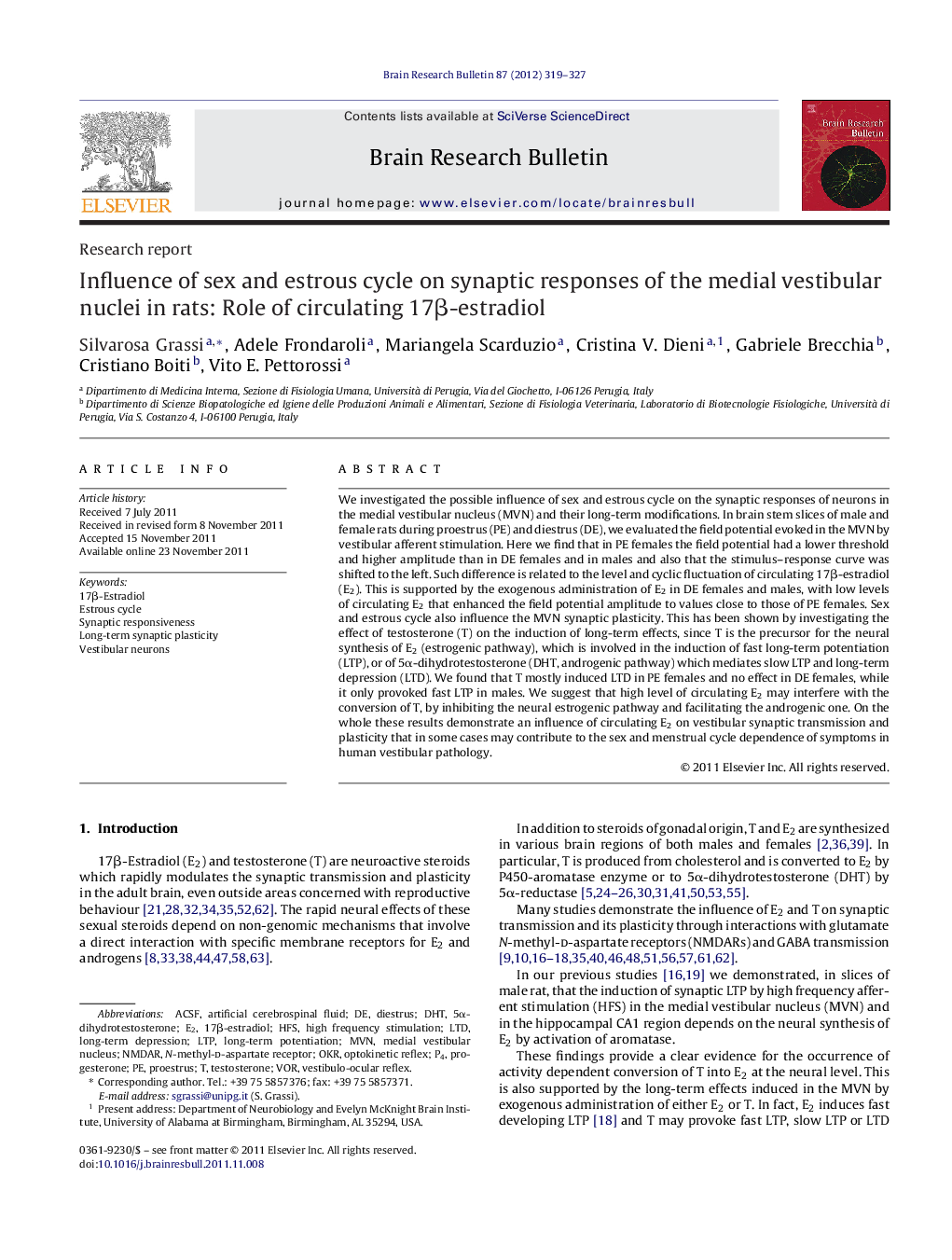| Article ID | Journal | Published Year | Pages | File Type |
|---|---|---|---|---|
| 4319025 | Brain Research Bulletin | 2012 | 9 Pages |
We investigated the possible influence of sex and estrous cycle on the synaptic responses of neurons in the medial vestibular nucleus (MVN) and their long-term modifications. In brain stem slices of male and female rats during proestrus (PE) and diestrus (DE), we evaluated the field potential evoked in the MVN by vestibular afferent stimulation. Here we find that in PE females the field potential had a lower threshold and higher amplitude than in DE females and in males and also that the stimulus–response curve was shifted to the left. Such difference is related to the level and cyclic fluctuation of circulating 17β-estradiol (E2). This is supported by the exogenous administration of E2 in DE females and males, with low levels of circulating E2 that enhanced the field potential amplitude to values close to those of PE females. Sex and estrous cycle also influence the MVN synaptic plasticity. This has been shown by investigating the effect of testosterone (T) on the induction of long-term effects, since T is the precursor for the neural synthesis of E2 (estrogenic pathway), which is involved in the induction of fast long-term potentiation (LTP), or of 5α-dihydrotestosterone (DHT, androgenic pathway) which mediates slow LTP and long-term depression (LTD). We found that T mostly induced LTD in PE females and no effect in DE females, while it only provoked fast LTP in males. We suggest that high level of circulating E2 may interfere with the conversion of T, by inhibiting the neural estrogenic pathway and facilitating the androgenic one. On the whole these results demonstrate an influence of circulating E2 on vestibular synaptic transmission and plasticity that in some cases may contribute to the sex and menstrual cycle dependence of symptoms in human vestibular pathology.
► Synaptic response and plasticity in the medial vestibular nucleus depend on sex and cyclic fluctuation of 17β-estradiol (E2) during estrous cycle in females. ► Baseline synaptic responsiveness is higher in females during proestrus than in diestrus and in males. ► High level of circulating E2 in proestrus reduce the occurrence of LTP observed by T and E2 administration in males.
